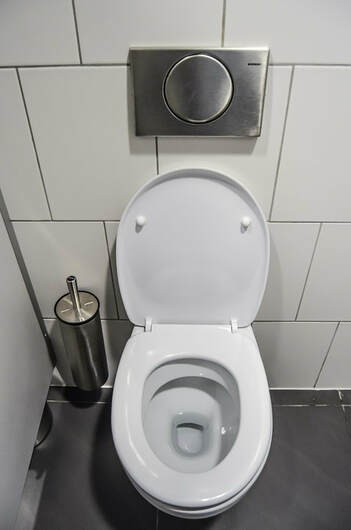 Did you know that the average person uses the toilet about 2,500 times a year? That’s a lot! It is very easy to take it for granted seeing that mostly everyone has at least one bathroom in their home. It would be very inconvenient then, if our toilet was not in good working order. So how do we check and see if our toilet is working well? Toilets need every part to function well. They actually have quite a complicated design. Were you aware that if a home inspector sees any damage such as chips in the porcelain, he would need to note it down as a defective toilet? Keep a look out then, for any signs of damage to the toilet. If you want to test if your toilet is working well, flush each one in the home to see if any are very slow at filling back up. Also, observe it they are taking too much time to flush. Do you have a problem with the toilet continuously running? Although this doesn’t always seem like a big deal, using that much water in your toilet all the time could end up being very expensive if you have mains water. Even with a private well, your water will just be wasted and damage can be caused to the pump. As you can see in either situation, a running or defective toilet is a problem. Do you know how much water each toilet flush usually takes? Toilets manufactured since 1994 are restricted to 1.6 gallons of water or less per flush thanks to federal law. That’s still a good deal of water, and not something we usually think about.
5 Comments
 Over 49,000 injuries from ladder falls are reported yearly, so knowing how to properly use a ladder while doing construction projects or any DIY projects is of the utmost importance. Here are some safety tips and ladder tips Knowing the different types of ladders is the first step to prevent injury. Each different type of ladder has its own ability, so knowing the abilities and functions will help prevent injury to yourself in the long run. Before using a ladder, make sure all the components, i.e. bolts, screws, steps, are attached properly, etc. Always face the ladder when walking up and down the steps, to lower the chances of slipping and falling. When setting up your ladder, make sure it is set up on a secure foundation, so that as you climb up, the ladder doesn’t move side to side and have that potential of falling over with you on it. If you are on a roof, be aware of where the ladder is at all times. If it does fall, and you don’t know it, you could unwittingly go to step back on it with nothing being there, thus leading to a fall. Finally, wearing the right kind of safety gear is vital as well. Gear like hard hats, eye protection, heavy duty boots, and gloves will help keep you steady on the ladder and will prevent injury to your head if you do fall. Keeping these safety tips in mind will help you to remain injury free, and complete your projects in a reasonable amount of time, and with the best outcome. Source: InterNACHI
Can the electric and magnetic fields (EMFs) to which people are routinely exposed cause health effects? What are sources of EMFs, and when are they dangerous? An "electromagnetic field" is a broad term which includes electric fields generated by charged particles in motion, and radiated fields, such as TVs, radios, hair dryers and microwave ovens. Electric fields are measured in units of volts per meter, or V/m. Magnetic fields are measured in milli-Gauss, or mG. The field is always strongest near the source and diminishes as you move away from the source. These energies have the ability to influence particles at great distances. For example, the radiation from a radio tower influences the atoms within a distant radio antenna, allowing it to pick up the signal. Despite the many wonderful conveniences of electrical technology, the effects of EMFs on biological tissue remains the most controversial aspect of the EMF issue, with virtually all scientists agreeing that more research is necessary to determine safe or dangerous levels. Research since the mid-1970s has provided extensive information on biological responses to power-frequency electric and magnetic fields. The Electric and Magnetic Fields (EMF) Research and Public Information Dissemination (RAPID) Program was charged with the goal of determining if electric and magnetic fields associated with the generation, transmission and use of electrical energy pose a risk to human health. The fact that 20 years of research have not answered that question is clear evidence that health effects of EMF are not obvious and that risk relationships, if risk is identified, are not simple. Because epidemiologic studies have raised concerns regarding the connection between certain serious human health effects and exposure to electric and magnetic fields, the program adopts the hypothesis that exposure to electric or magnetic fields under some conditions may lead to unacceptable risk to human health. The focus of the program is not only to test (as far as possible within the statutory time limits) that hypothesis for those serious health effects already identified, but to identify, as far as possible, the special conditions that lead to elevated risk, and to recommend measures to manage risk. Electromagnetic hypersensitivity (ES) is a physiological disorder characterized by symptoms directly brought on by exposure to electromagnetic fields. It produces neurological and allergic-type symptoms. Symptoms may include, but are not limited to, headache, eye irritation, dizziness, nausea, skin rash, facial swelling, weakness, fatigue, pain in joints and/or muscles, buzzing/ringing in the ears, skin numbness, abdominal pressure and pain, breathing difficulty, and irregular heartbeat. Those affected persons may experience an abrupt onset of symptoms following exposure to a new EMF, such as fields associated with a new computer or with new fluorescent lights, or a new home or work environment. Onset of ES has also been reported following chemical exposure. A concerted effort to provide scientifically valid research on which to base decisions about EMF exposures is underway, and results are expected in the next several years. Meanwhile, some authorities recommend taking simple precautionary steps, such as the following:
Magnetic fields are not blocked by most materials. Magnetic fields encountered in homes vary greatly. Magnetic fields rapidly become weaker with distance from the source.
 If you have a pool and young children as well, what is a danger that can fall upon these young ones? Drowning. What can you do to prevent this from happening? Well, in this article we will talk a little bit about a specific device to detect surface waves in your pool, whether it be little children unsupervised or the family pet. Basically the device is called a pool alarm. There is one contact that sits on top of the water, and one below it. When both contacts detect surface waves in your pool, the alarm goes off. The nice thing about it is that you can also decrease or increase the sensitivity of the alarm. With this in mind, you can more accurately tell who or what is swimming in your pool, unsupervised or not. A drawback to the alarm however is that you may forget to turn it on, so you may not hear what is going on in your pool until it’s too late. It should be noted that this device should NOT be used as a stand alone safeguard for your children or pets who go into your pool unsupervised. Using other strategies is not only a good idea, but it will benefit your household in the long run, and keep everyone safe. |
AuthorMike McFadden, Company Owner & Certified Master Home Inspector Archives
July 2024
Categories |
Lets Talk! (407) 630-4973

 RSS Feed
RSS Feed
